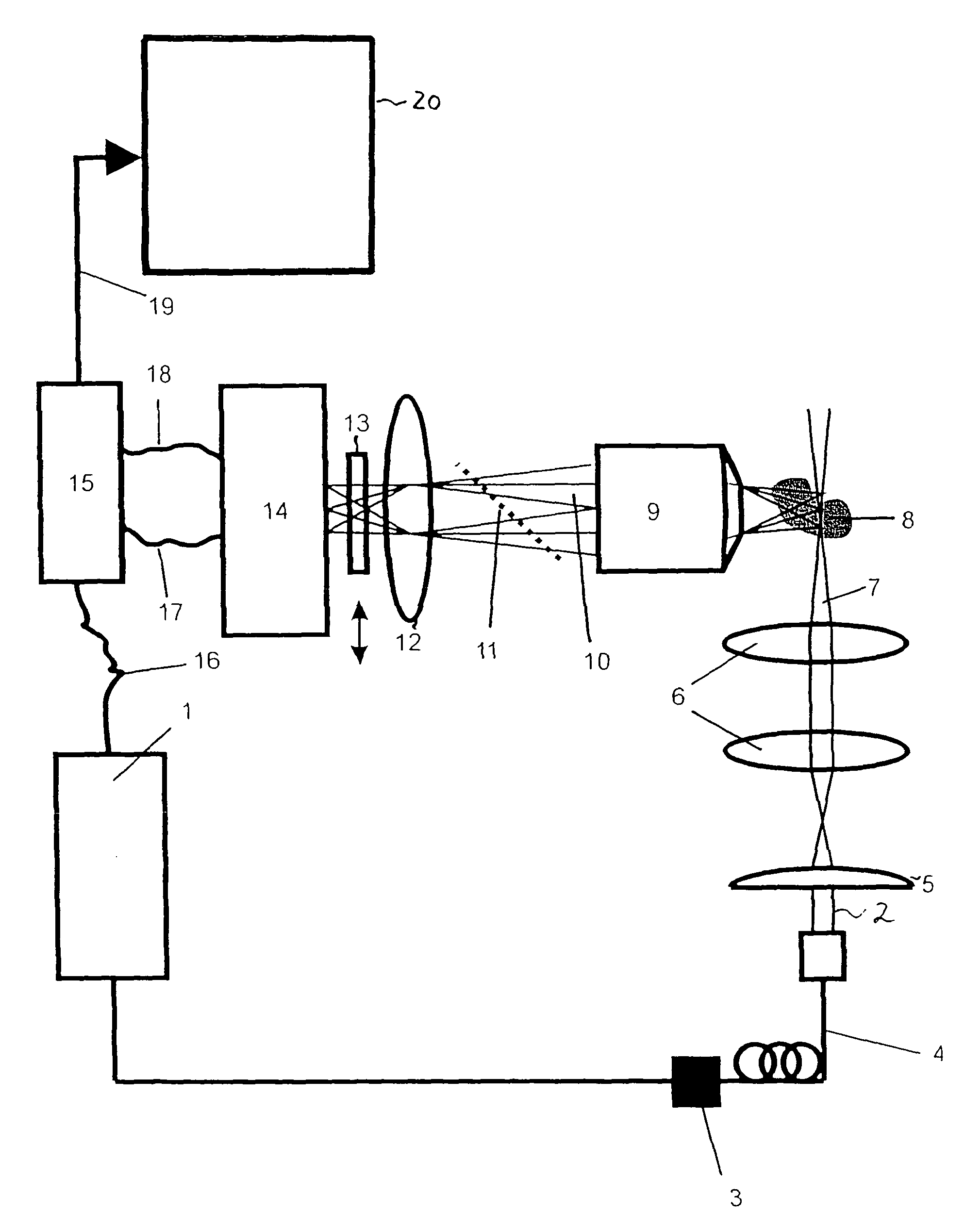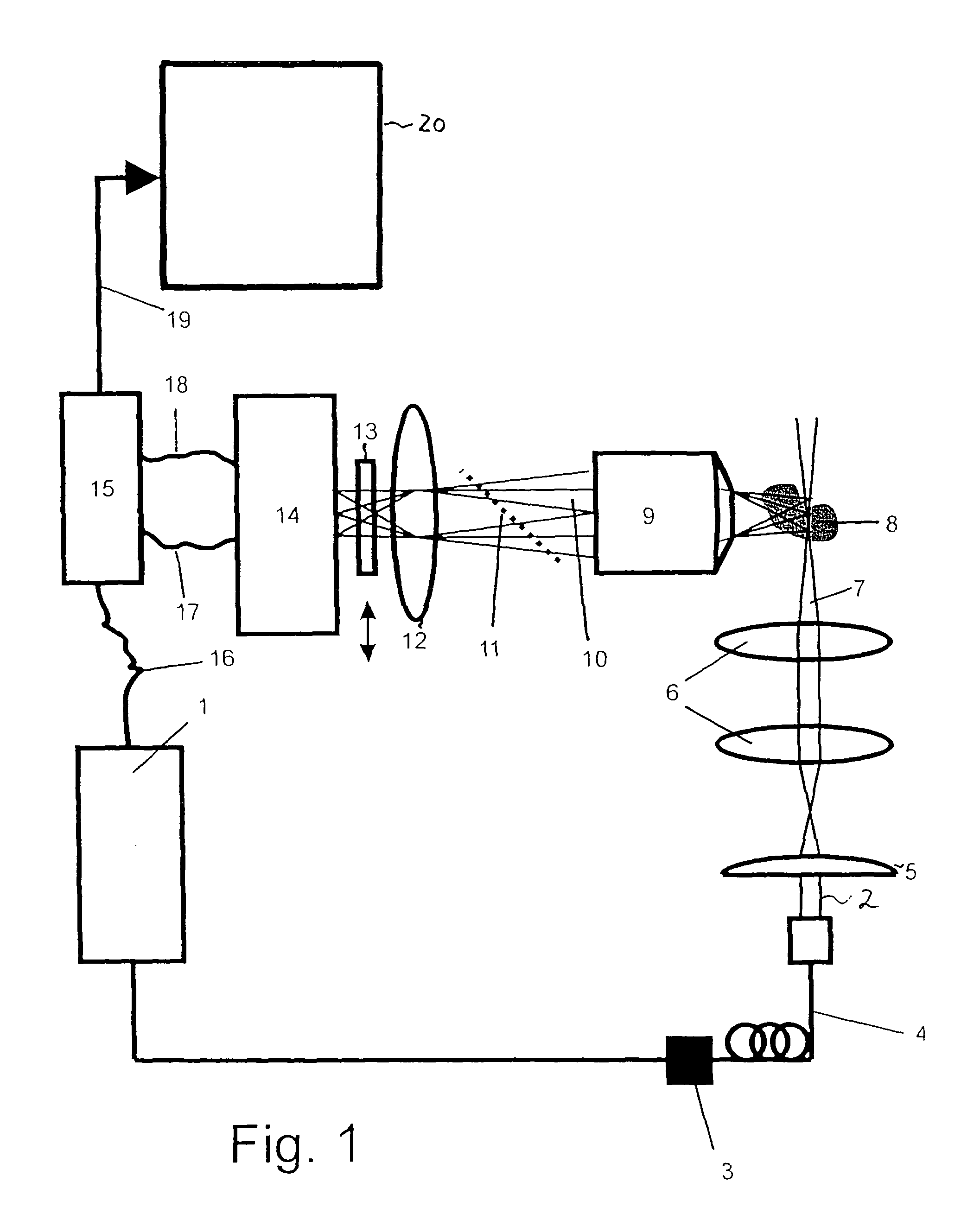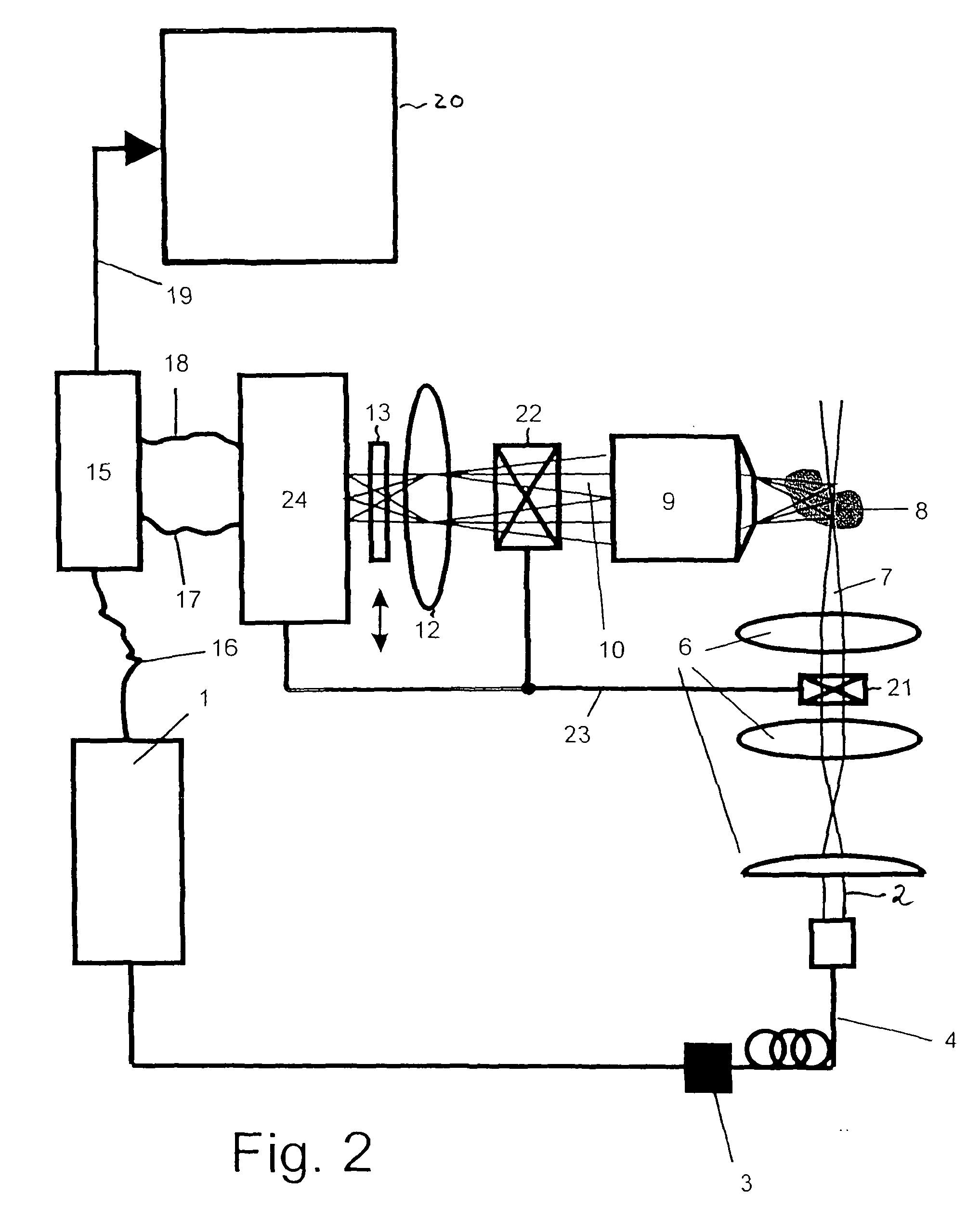Device for microscopy having selective illumination of a plane
a plane illumination and microscopy technology, applied in the field of microscopy devices, can solve the problems of reducing the efficiency of the microscopy process, affecting the quality of the microscopy, so as to reduce the stress of the sample and shorten the image recording time
- Summary
- Abstract
- Description
- Claims
- Application Information
AI Technical Summary
Benefits of technology
Problems solved by technology
Method used
Image
Examples
Embodiment Construction
[0023]It is to be understood that the figures and descriptions of the present invention have been simplified to illustrate elements that are relevant for a clear understanding of the present invention, while eliminating, for purposes of clarity, many other elements which are conventional in this art. Those of ordinary skill in the art will recognize that other elements are desirable for implementing the present invention. However, because such elements are well known in the art, and because they do not facilitate a better understanding of the present invention, a discussion of such elements is not provided herein.
[0024]The present invention will now be described in detail on the basis of exemplary embodiments.
[0025]FIG. 1 is a schematic diagram showing a microscopy device according to an embodiment example of the invention. The microscopy device is designed for use in imaging fluorescence lifetime microscopy methods in the time domain in which the generation of optical sections by t...
PUM
 Login to View More
Login to View More Abstract
Description
Claims
Application Information
 Login to View More
Login to View More - R&D
- Intellectual Property
- Life Sciences
- Materials
- Tech Scout
- Unparalleled Data Quality
- Higher Quality Content
- 60% Fewer Hallucinations
Browse by: Latest US Patents, China's latest patents, Technical Efficacy Thesaurus, Application Domain, Technology Topic, Popular Technical Reports.
© 2025 PatSnap. All rights reserved.Legal|Privacy policy|Modern Slavery Act Transparency Statement|Sitemap|About US| Contact US: help@patsnap.com



